When John Ruskin recounted his adventures collecting Turner watercolours he attached special importance to the sequence of continental views that the painter made in the early 1840s, when he was in his late sixties. Turner had worked in series all his life, often for published ‘Picturesque Tours’, and now, even when he had no need to do so, continued with the habit. He asked his dealer, Thomas Griffith, to find buyers for ten such views in 1842, and for another ten in 1843. More groups followed in 1844 and 1845 – a remarkable outpouring for a man of his age and stature, who certainly had no need to sell new work by that time.
But these watercolours constitute some of Turner’s greatest achievements, both as records of his highly personal vision of the world, and as technical feats of extraordinary originality and beauty. Ruskin knew what they were worth aesthetically but thought they might be difficult to sell. Among the subjects he praised most strongly were three views of a mountain overlooking Lake Lucerne: Mount Rigi could be climbed and commanded fine views over the lake, but was also a striking feature of the landscape when seen from the water.
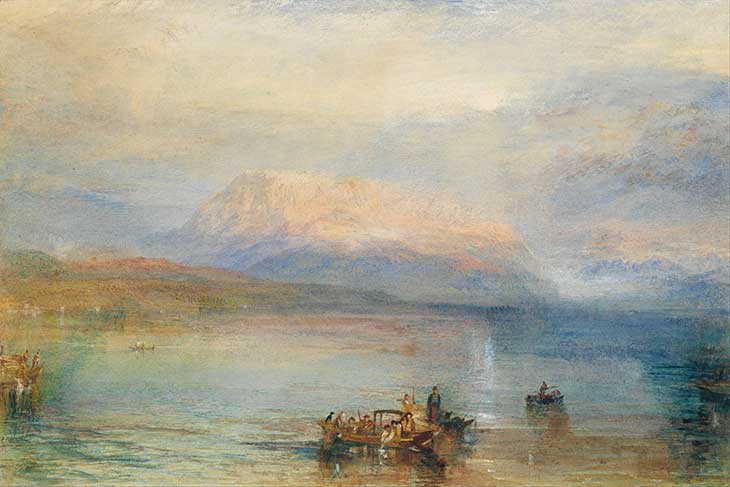
The Red Rigi (1842), J.M.W. Turner. National Gallery of Victoria, Melbourne
Turner made many watercolour studies of the mountain in his sketchbooks, sequences showing it in different lights and times of day. From them he created three finished works that are among the most ravishing essays in light and colour ever to have been produced by a landscape painter. They are known by the names Ruskin gave them: The Blue Rigi, The Red Rigi, and The Dark Rigi, which is currently under a temporary export stop, in the hope that it can be acquired by a British public collection. These all appeared in the first series of 1842. The Dark Rigi was bought by a well-established patron and friend of Turner’s, the Scottish laird Hugh Andrew Johnson Munro of Novar (1797–1864), of a distinguished Ross-shire military family. The Red Rigi, also bought by Munro of Novar, shows the mountain fiery in sunset light; it is now in the National Gallery of Victoria in Melbourne. The Blue Rigi, a subtly misty scene of morning twilight, was acquired by the Tate in 2007.
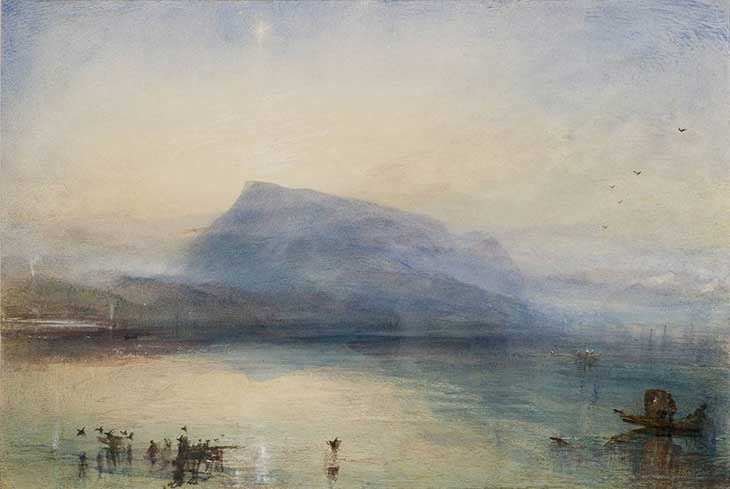
Blue Rigi (1942), J.M.W. Turner. Tate, London
Thanks to Ruskin, we know in some detail the rather unusual method Turner adopted to find buyers for his late ‘Swiss’ sets. (Two subjects are not Swiss: Coblenz Bridge, now in the Art Museum, Cincinnati, and Lake Constance, now in York City Art Gallery.) He had been to Switzerland in 1841 and was to return there in the three following years, and developed ideas that had particularly taken hold of his imagination while he was travelling. He was aware, it seems, that his style had changed of late, and he presented these new works as self-consciously experimental. He approached Griffith with four finished watercolours, which Ruskin calls ‘specimens’, and also produced a sheaf of ‘samples’, pages from his Swiss sketchbooks which he suggested might be shown to potential clients who could commission the subjects they wanted. Unusual as this procedure was, it preserved the dynamic, perhaps slightly risky, relationship between Turner and a critical public that he had always been used to. Griffith solicited responses from clients whom he knew to be Turner aficionados and managed to get takers for all but one. Ruskin himself (with his father’s money) bought two; Munro of Novar three, including the Red and Dark Rigis; Elhanan Bicknell the whaling entrepreneur two, including the Blue Rigi. This left one, Lake Constance, which Griffith kept.
Ruskin waxed lyrical about these watercolours. He described the Dark Rigi as ‘seen from the window of his [Turner’s] inn, La Cygne, in the dawn of a lovely summer’s morning; a fragment of fantastic mist hanging between us and the hill.’ It captures a moment slightly later than the Blue Rigi: there are more people about on the lake, including passengers waiting at a pier and men poling rafts of logs. As with the other two in this little set, there is a palpable sense of the expansive calm of nature just before life erupts into its sublime spaces and the working day begins. Looking at these magical evocations of the grandeur of nature in a context of vigilant human awareness, one finds oneself unconsciously holding one’s breath.
Andrew Wilton’s novel about Turner, The Painter’s Boy, is out now.
Unlimited access from just $16 every 3 months
Subscribe to get unlimited and exclusive access to the top art stories, interviews and exhibition reviews.

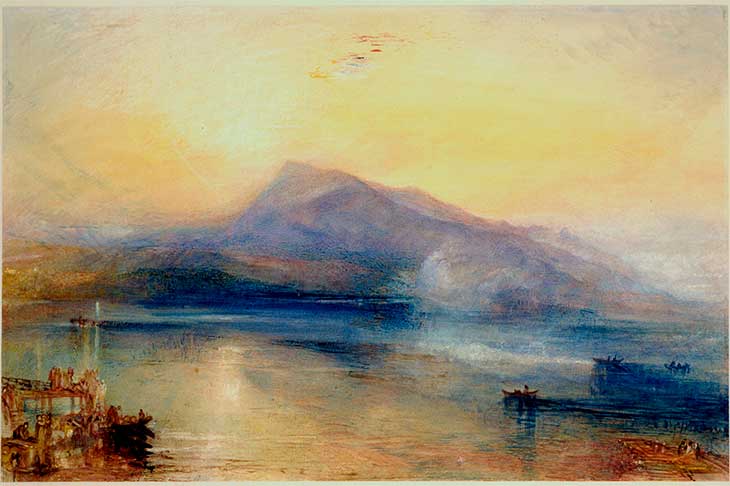
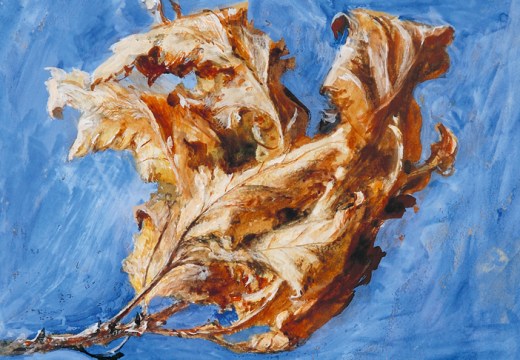
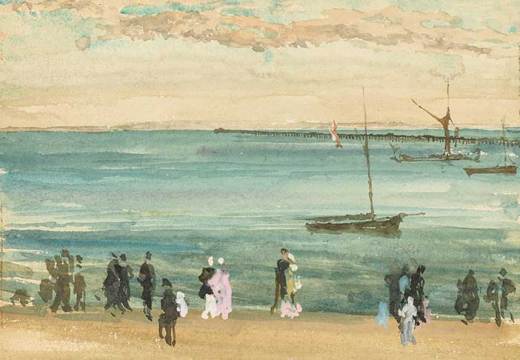










![Masterpiece [Re]discovery 2022. Photo: Ben Fisher Photography, courtesy of Masterpiece London](http://www.apollo-magazine.com/wp-content/uploads/2022/07/MPL2022_4263.jpg)
Why are fathers so absent from art history?